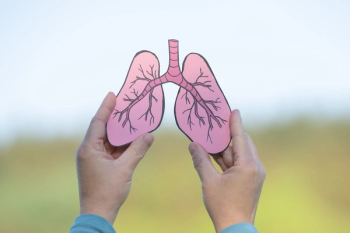
What Are the Most Effective Treatments for Insomnia?
Pharmacotherapy is modestly effective for short-term use in conjunction with healthy sleep habits and cognitive behavioral therapy.
Insomnia is a common and often a debilitating disorder that is associated with significant adverse consequences for physical health and well‐being.
Insomnia disorder is defined in the International Classification of Sleep Disorders as a complaint of trouble initiating or maintaining sleep, which is associated with daytime consequences and is not attributable to environmental circumstances or inadequate opportunity to sleep.1 The disorder is identified as chronic when it has persisted for at least 3 months at a frequency of at least 3 times per week. When the disorder meets the symptom criteria but has persisted for less than 3 months, it is considered short-term insomnia. Short-term insomnia affects 30% to 50% of the population.2
The recommended first-line therapies for insomnia are nonpharmacologic, such as cognitive behavioral therapy for insomnia (CBT-I), relaxation training, sleep restriction, or stimulus control. Pharmacologic therapy is only added if necessary.
Who Is at Risk?
Insomnia can occur at any age but is particularly common among the elderly, with symptoms present in upt to 65% of individuals aged 65 years or older.3 Patients with comorbidities, such as chronic pain, heart failure, or neurologic or pulmonary disease are at increased risk.4 An increased prevalence of insomnia is also associated with psychiatric disorders, including anxiety, bipolar and major depression, posttraumatic stress disoreder, and substance abuse.5 Patients with a history of traumatic brain injury often suffer from insomnia.6
Therapeutic Options
Medications with regulatory approval for insomnia are detailed in the Table.7 Selecting a medication for insomnia is highly individualized and includes assessing the predominant sleep complaint, such as medication adverse effect profile, mixed sleep problems, patient comorbitidies, sleep maintenance, or sleep onset insomnia.
Table. FDA Approved Medications for Chronic Insomnia7
Clinical Implications
Off-label and OTC medications are also used for insomnia but generally are not recommended. Trazodone is an antidepressant, and though it has been used extensively for several decades to treat insomnia, it is not recommended.8 Dizziness, dry mouth, nasal congestion, nausea, orthostasis, and syncope are common adverse effects (AEs) of Trazodone. OTC sedating antihistamines, such as diphenhydramine and doxylamine, are short acting with generally little evidence for efficacy and potential for anticholinergic AEs.9
Pharmacotherapy for insomnia is modestly effective for short-term use in conjunction with healthy sleep habits and CBT-I. Generally, nonbenzodiazepine receptor agonists are cost effective first-line options for healthy younger patients for short-term use. Other options include dual orexin receptor antagonists, which are more expensive, or ramelteon, which has no abuse potential but is not effective for sleep maintenance. Benzodiazepines are generally avoided for treatment of insomnia, especially in elderly patients and individuals with substance use disorders. Educate patients with insomnia about avoiding alcohol or other depressants, the importance of regular follow-up appointments, the potential to affect driving ability, and the risks of next-day sleepiness. Medications for insomnia may need to be tapered to avoid rebound insomnia during discontinuation.
References
1. International Classification of Sleep Disorders, 3rd ed. American Academy of Sleep Medicine; 2014.
2. Ellis JG, Perlis ML, Neale LF, Espie CA, Bastien CH. The natural history of insomnia: focus on prevalence and incidence of acute insomnia. J Psychiatr Res. 2012;46(10):1278-1285. doi:10.1016/j.jpsychires.2012.07.00
3. Patel D, Steinberg J, Patel P. Insomnia in the elderly: a review. J Clin Sleep Med. 2018;14(6):1017-1024. doi: 10.5664/jcsm.7172
4. Bhaskar S, Hemavathy D, Prasad S. Prevalence of chronic insomnia in adult patients and its correlation with medical comorbidities. J Fam Med Prim Care. 2016;5(4):780-784. doi:10.4103/2249-4863.201153
5. Spiegelhalder K, Regen W, Nanovska S, Baglioni C, Riemann D. Comorbid sleep disorders in neuropsychiatric disorders across the life cycle. Curr Psychiatry Rep. 2013;15(6):364. doi:10.1007/s11920-013-0364-5
6. Wickwire EM, Schnyer DM, Germain A, et al. Sleep, sleep disorders, and circadian health following mild traumatic brain injury in adults: review and research agenda. J Neurotrauma. 2018;35(22):2615-2631. doi:10.1089/neu.2017.5243
7. Comparison of insomnia treatments. Pharmacist’s Letter. Accessed December 27, 2021. https://pharmacist.therapeuticresearch.com/Content/Segments/PRL/2014/Jul/Comparison-of-Insomnia-Treatments-7197
8. Sateia MJ, Buysse DJ, Krystal AD, Neubauer DN, Heald JL. Clinical practice guideline for the pharmacologic treatment of chronic insomnia in adults: an American Academy of sleep medicine clinical practice guideline. J Clin Sleep Med. 2017;13(2):307-349. doi:10.5664/jcsm.6470
9. 2019 American Geriatric Society Beers Criteria Update Expert Panel. American Geriatrics Society 2019 updated AGS Beers criteria for potentially inappropriate medication use in older adults. J Am Geriatr Soc. 2019;67(4):674-694. doi:10.1111/jgs.1576
Newsletter
Stay informed on drug updates, treatment guidelines, and pharmacy practice trends—subscribe to Pharmacy Times for weekly clinical insights.
















































































































































































































